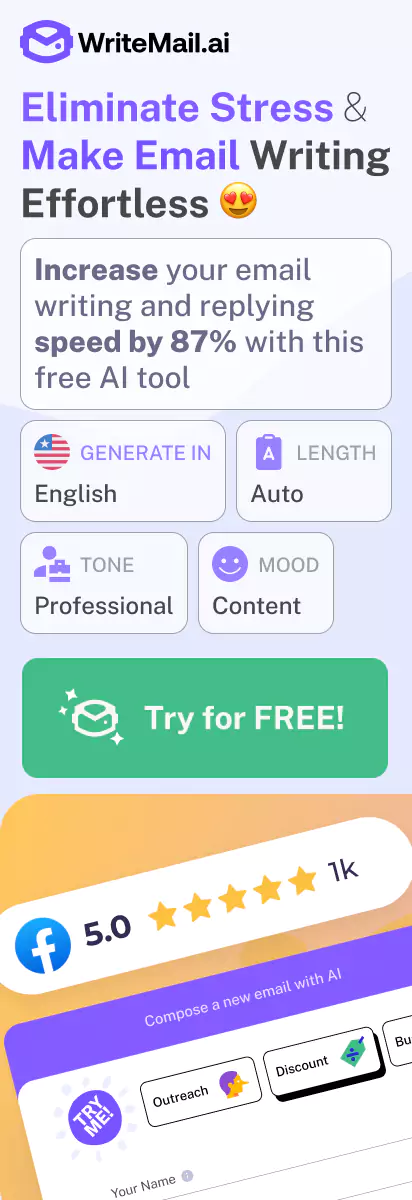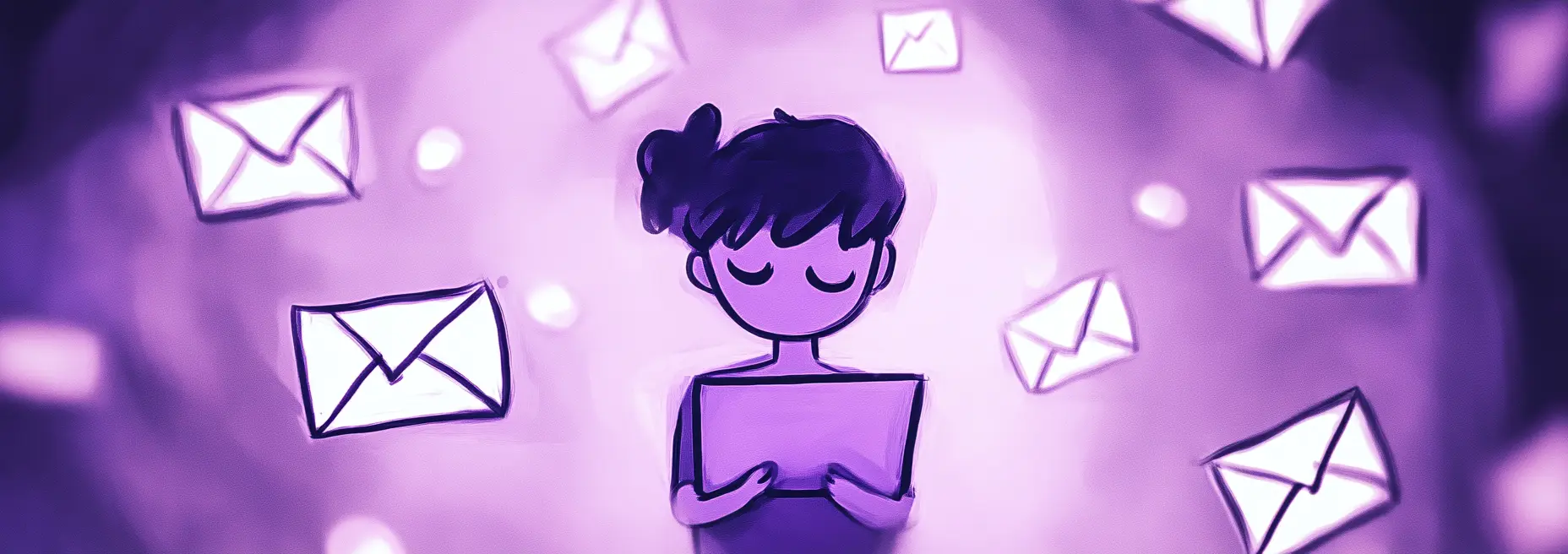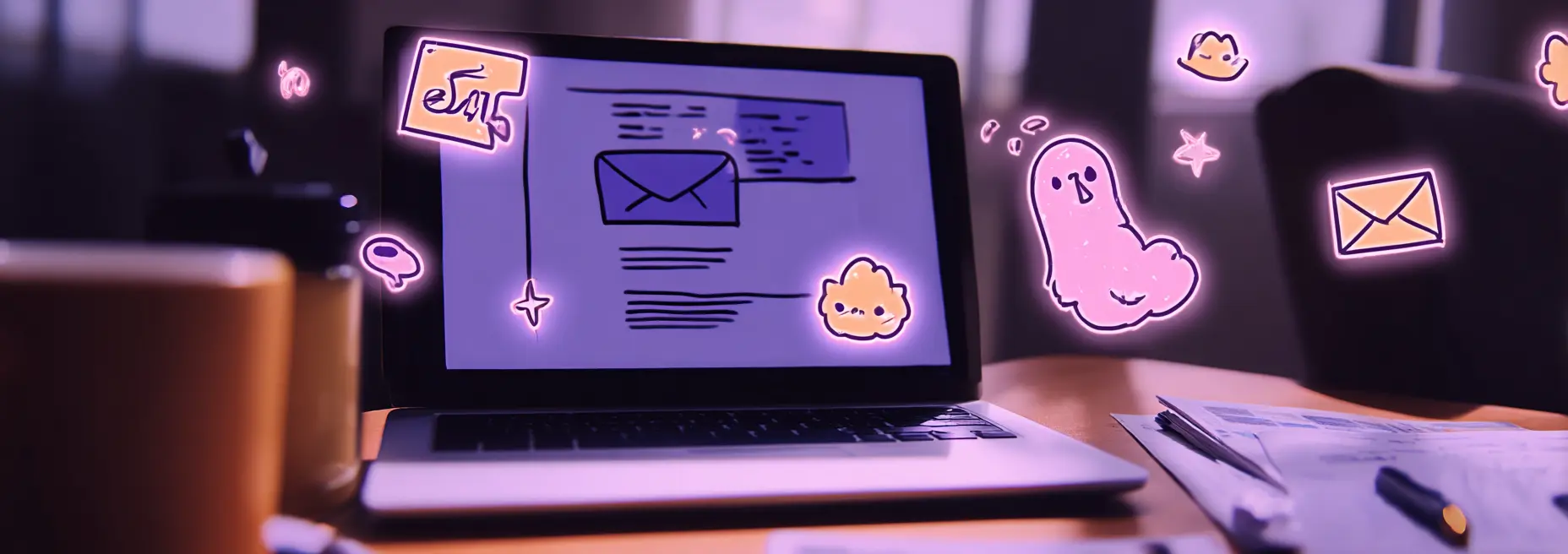Have you ever stared at a blank screen, trying to craft the perfect response to an angry customer? I know I have. That moment of panic when you’re searching for just the right words that will defuse tension rather than escalate it. It’s a universal challenge in customer service, and the stakes couldn’t be higher.
According to a recent study by HubSpot, 93% of customers are likely to make repeat purchases with companies that offer excellent customer service. Yet that same research revealed that 58% of consumers will switch companies after just one negative service experience. The emails you send are often the difference between loyalty and abandonment.
That’s exactly why I’ve created this collection of customer service email templates. You’ll find ready-to-use frameworks for handling everything from routine inquiries to those nightmare scenarios that make your stomach drop. Each template is designed not just to solve problems but to transform potential negative experiences into loyalty-building moments.
When you use these templates, you’ll notice something important: they do more than just “handle” issues. They demonstrate empathy, provide clear solutions, and leave customers feeling valued. I’ve seen teams reduce their response time by 37% while simultaneously improving customer satisfaction scores by implementing similar systems.
In this article, you’ll discover templates for acknowledging complaints, delivering bad news, following up after issues are resolved, and even turning angry customers into advocates. Each template comes with customization tips so you can maintain your brand voice while leveraging proven psychological principles that diffuse tension and build trust.
Let’s start with the foundation of effective customer service emails and then move into the specific templates you can start using today…
Essential Components of Customer Service Email Templates
When you’re crafting customer service emails, having a solid structure makes all the difference between confusion and clarity. I’ve found that the best customer service emails follow a specific framework that guides the customer from acknowledgment to resolution. Let’s break down these essential elements so you can create templates that consistently deliver results.
Structure Fundamentals That Build Trust
Every effective customer service email needs five core components to properly address customer concerns:
- Personalized greeting: Address the customer by name to immediately establish a human connection
- Issue acknowledgment: Clearly restate the customer’s concern to demonstrate understanding
- Solution presentation: Provide a clear, actionable solution to their specific problem
- Action steps: Outline precisely what will happen next or what the customer needs to do
- Empathetic closing: End with appreciation and an invitation for further questions
This structure works because it mirrors how we solve problems in face-to-face conversations. When you follow this pattern, you’re essentially guiding your customer through a natural problem-resolution journey that feels personal and thoughtful.
Tone Selection Based on Issue Severity
Not all customer issues deserve the same tone. When you’re creating templates, I recommend developing variations that scale your empathy appropriately:
- Minor inconveniences: Friendly, upbeat tone that acknowledges the issue without dramatizing it
- Moderate problems: Balanced tone that takes the issue seriously while maintaining confidence
- Serious issues: Deeply empathetic tone that prioritizes the customer’s feelings before solutions
- Crisis situations: Formal, urgent tone that emphasizes immediate action and resolution
The key is matching your emotional response to the customer’s likely state of mind. I’ve seen too many companies use cheerful language when addressing serious problems, which only frustrates customers further. Remember: your tone should validate the customer’s perceived severity of the issue, even if you might personally view it differently.
Example of a Well-Structured Customer Service Email:
Personalization Elements That Transform Templates
Templates save time, but they shouldn’t sound robotic. To transform your templates into meaningful interactions, I recommend incorporating these personalization elements:
- Reference specific details: Mention the exact product, date, or issue the customer experienced
- Acknowledge customer history: Note their loyalty or previous interactions when appropriate
- Customize solution language: Tailor solution explanations to their technical level
- Personalize the sign-off: Adjust closings based on the nature of your interaction
When you deliberately add these personal touches, your templates maintain efficiency while still delivering the human connection customers crave. This balanced approach lets you scale your customer service without sacrificing quality.
Using AI to Enhance Template Consistency and Customization
Managing a library of customer service templates can be challenging, especially as your business grows. This is where AI tools like WriteMail.ai can make a significant difference in your workflow. You can use such tools to maintain template consistency while enabling the personalization that makes customers feel valued.
With AI assistance, you can:
- Generate variations of your templates for different scenarios
- Ensure consistent tone across all customer communications
- Quickly customize templates with relevant customer information
- Create emotionally intelligent responses based on customer sentiment
The best approach I’ve found is creating core templates for your most common scenarios, then using AI to help personalize these templates for each specific customer interaction. This hybrid method gives you the best of both worlds: the efficiency of templates with the personal touch of customized communication.
Remember that even the best template needs your human oversight. I always recommend reviewing AI-generated responses to ensure they accurately reflect your brand voice and properly address your customers’ specific needs before sending.
In the next section, I’ll show you how to craft acknowledgment templates that turn customer complaints into opportunities for building stronger relationships.
Issue Acknowledgment Templates: Turning Complaints into Opportunities
When a customer reaches out with a complaint, your response window is incredibly narrow. How you acknowledge their issue can either defuse tension or escalate it further. Let me show you how to craft acknowledgment emails that transform potential brand detractors into loyal advocates.
Validating Concerns Without Admitting Liability
There’s a delicate balance between showing empathy and admitting fault prematurely. When you acknowledge a customer’s complaint, you need to validate their feelings without necessarily accepting blame — especially important in situations with legal implications.
Try these validation techniques in your templates:
- Reflection statements: “I understand you’re frustrated that your order arrived damaged.”
- Appreciation phrases: “Thank you for bringing this to our attention—feedback like yours helps us improve.”
- Problem recognition: “I can see how this situation would be inconvenient for you.”
Notice how none of these statements admit fault but all validate the customer’s experience. This psychological technique called “reflective listening” shows customers you genuinely care about their perspective.
Active Listening in Written Form
Active listening doesn’t just apply to verbal conversations. In email communication, you can demonstrate that you’re truly hearing the customer through specific language patterns:
- Specific issue paraphrasing: Restate their specific concern using slightly different words to show comprehension.
- Detail acknowledgment: Reference specific details they mentioned to prove you’ve read their message thoroughly.
- Impact recognition: Acknowledge how the issue has affected them personally.
For example, if a customer complains about website downtime, don’t just say “Sorry about our website.” Instead, write: “I understand that you were unable to place your order during our unexpected 2-hour website maintenance period yesterday, which caused you to miss your deadline.”
When you mirror back specific details, customers feel heard rather than processed through a system.
Example Acknowledgment Email:
The Impact of Response Time on Customer Satisfaction
The clock starts ticking the moment a customer hits “send” on their complaint. According to research by SuperOffice, 88% of customers expect a response to their email within an hour. Yet the average response time for companies is 12 hours!
Consider these striking statistics:
- Customer satisfaction rates are 2.5x higher when issues are acknowledged within 1 hour versus 24+ hours
- 42% of consumers who complain on social media expect a response within 60 minutes
- Companies that respond quickly to complaints see a 25% higher customer retention rate
Even if you can’t solve the problem immediately, a quick acknowledgment buys you goodwill and time. If you’re struggling with response times, consider implementing template-based acknowledgments that your team can quickly personalize and send while working on actual solutions.
The Art of the Apology: When and How
Not every situation warrants an apology. In fact, apologizing unnecessarily can undermine customer confidence or create liability issues. Let me help you navigate this nuanced territory:
When to include apology language:
- Clear service failures (late deliveries, system outages, billing errors)
- Inconveniences directly caused by your company
- Poor customer experiences, even if technically “by policy”
When to avoid direct apologies:
- Situations involving third-party errors outside your control
- When facts are disputed or unclear
- Cases with potential legal implications
If an apology is warranted, make it specific rather than generic. Compare “We apologize for any inconvenience” (weak) with “I’m sorry that our website outage prevented you from completing your time-sensitive order” (strong).
The strongest acknowledgment emails combine prompt timing with personalized validation, clear active listening signals, and appropriate apology language when warranted. When you master this formula, you’ll find that customer complaints become valuable opportunities to demonstrate your company’s commitment to service excellence.
“A complaint is a gift. It gives us the chance to fix a service breakdown before the customer defects, and to learn where our system needs improvement.” – Janelle Barlow, author of “A Complaint Is a Gift”
Remember that your acknowledgment email is just the beginning of your service recovery process, but it sets the critical tone for everything that follows. When you nail this first impression, you’ll find customers more receptive to your proposed solutions in the next phase of communication.
Problem-Resolution Templates That Showcase Your Expertise
When you’re addressing customer issues, how you present solutions matters just as much as the solutions themselves. I’ve found that the way you communicate resolutions can dramatically impact whether customers view your brand as competent and trustworthy. Let’s explore how to craft emails that don’t just solve problems but showcase your expertise in the process.
Solution-Oriented Language That Builds Confidence
The language you choose when presenting solutions can either inspire confidence or create doubt. When writing resolution emails, I recommend using definitive, action-oriented phrasing that demonstrates certainty.
- Instead of uncertainty: “We might be able to fix this by trying…”
- Use confident expertise: “I’ve identified the cause of this issue and implemented a solution that will…”
This approach doesn’t mean being rigid—you can still maintain flexibility while conveying expertise. When you use phrases like “Based on my analysis” or “Our technical team has confirmed,” you position yourself as an authority who’s speaking from experience rather than guessing.
Step-by-Step Instruction Templates for Complex Issues
When your customer faces a technical or complicated issue, providing clear, sequential instructions transforms your email from merely helpful to invaluable. I’ve learned that breaking down complex solutions into digestible steps significantly reduces follow-up questions and increases resolution rates.
Here’s how you can structure these instructions:
- Begin with context: Briefly explain what the steps will accomplish
- Number each step: Sequential numbering helps customers follow along
- Use visual cues: Bold important actions or include screenshots when possible
- Indicate expected outcomes: After each critical step, describe what the customer should see
- Provide troubleshooting hints: Address common stumbling points preemptively
Example of a Problem-Resolution Email
Notice how this template demonstrates expertise while maintaining a helpful, accessible tone. The resolution is presented confidently, steps are clearly outlined, and expectations are set for what should happen after following the instructions.
Follow-Up Framework to Ensure Post-Resolution Satisfaction
Your job isn’t complete when you send the resolution email. To truly showcase expertise and build loyalty, you need a structured follow-up approach. I recommend creating a simple framework that includes:
- Confirmation check: A brief email 24-48 hours after resolution asking if the solution worked
- Usage support: Offer additional tips related to the resolved issue
- Prevention advice: Suggest ways to avoid similar problems in the future
This three-part framework demonstrates that you’re invested in long-term success, not just closing tickets. Research shows that customers who receive structured follow-ups are 67% more likely to rate their support experience as “excellent” compared to those who receive no follow-up.
Using AI Assistance for Custom Solutions
When you’re handling multiple customer issues daily, creating customized solution emails for each scenario can be time-consuming. This is where AI tools can significantly enhance your efficiency without sacrificing quality.
Advanced AI assistants can help you:
- Generate solution frameworks based on issue categories
- Customize technical instructions for different customer technical levels
- Maintain consistent solution quality across your support team
- Scale personalization even with high ticket volumes
What makes this approach powerful is that you’re not replacing human expertise with automation — you’re amplifying it. By using AI to handle the structural and repetitive elements of solution emails, you free up mental bandwidth to focus on the nuanced aspects of customer care that truly require human touch.
Balancing Technical Detail with Accessibility
One of the biggest challenges you’ll face when writing resolution emails is determining how technical to be. Too much jargon can confuse customers, while oversimplification might seem patronizing to technically savvy clients.
I recommend creating tiered template versions for different technical comfort levels:
- Basic: Focus on what to do, not why it works
- Intermediate: Include brief explanations of the underlying issues
- Advanced: Provide detailed technical context and root cause analysis
You can quickly assess which level is appropriate based on the customer’s initial communication style, their history with your product, and their self-identified comfort with technology.
Remember, the goal of your resolution emails isn’t just to solve the immediate problem—it’s to build confidence in your expertise and establish yourself as a trusted resource for future needs. When you craft emails that accomplish both objectives, you transform a potential negative experience into an opportunity to strengthen customer loyalty.
Transforming Negative Experiences with Proactive Recovery Templates
When a customer has had a negative experience with your product or service, you’re at a critical moment in your relationship with them. How you respond can either drive them away permanently or, surprisingly, make them more loyal than before. Let me show you how to craft recovery emails that not only resolve issues but actually strengthen customer relationships.
The Service Recovery Paradox: Turning Problems into Loyalty
Have you ever had a terrible experience with a company, only to be so impressed by how they handled your complaint that you became an even stronger supporter? This phenomenon is known as the “service recovery paradox,” and research confirms it’s real. A study by the Journal of Marketing found that customers who experience a problem that’s resolved quickly and effectively demonstrate 30% higher loyalty than those who never experienced a problem at all.
When you craft a recovery email, you’re not just fixing an issue—you’re potentially creating a more committed customer. The key is to move quickly and authentically. According to research by Salesforce, 80% of customers say the experience a company provides is as important as its products or services, and 57% have stopped buying from a company because a competitor provided a better experience.
Crafting Compensation and Goodwill Gestures That Feel Authentic
When offering compensation or goodwill gestures in your emails, you need to be careful. If your offer feels formulaic or obligatory, it can actually deepen the customer’s negative perception rather than repair it. I’ve found the most effective approach is to:
- Personalize the offer: Reference the specific issue they experienced and explain why your chosen gesture addresses that particular problem
- Use value-based language: Instead of saying “Here’s 10% off,” try “I’d like to offer you a special discount as a loyal customer whose business we truly value”
- Provide options when possible: Giving customers choice in how they receive compensation increases their sense of control and satisfaction
- Be straightforward: Avoid complicated redemption processes or excessive conditions that make the customer work for their compensation
The difference between an obligatory gesture and an authentic one often comes down to the language you use and how specific you make the offer to their situation.
Example of an Effective Recovery Email
Turning Detractors into Promoters Through Personalized Follow-Up
Research by the White House Office of Consumer Affairs found that a dissatisfied customer will tell between 9-15 people about their experience. However, when you successfully recover from a service failure, you can transform these potential detractors into promoters who share their positive recovery experience instead.
The techniques I recommend for turning detractors into promoters include:
- Acknowledge their influence: Subtly recognize that their feedback has power—”Your insights have already helped us improve our process”
- Give them insider status: Provide early access to new features or improvements that resulted from their feedback
- Create a feedback loop: Follow up 2-3 weeks after resolution to check if they’re now satisfied and to share how their input led to specific changes
- Recognize loyalty: If they’ve been with you for a while, acknowledge this history in your communications
Remember that the most dissatisfied customers who become satisfied again are typically your most vocal advocates. Their story of how you turned things around becomes powerful word-of-mouth marketing that you couldn’t buy at any price.
Using AI to Analyze Sentiment and Craft the Perfect Recovery Response
When you’re dealing with upset customers, accurately assessing their emotional state is crucial for crafting an appropriate response. This is where AI tools can be particularly valuable in your service recovery workflow.
WriteMail.ai can analyze the sentiment in customer messages and recommend recovery language calibrated to their level of dissatisfaction. For instance, an analysis might reveal that a customer is expressing frustration but not anger, allowing you to respond with confidence-building language rather than profuse apologies that might actually escalate the situation.
I’ve found that the most effective way to use AI in recovery emails is to:
- Analyze initial complaint sentiment: Understand if the customer is mildly annoyed, genuinely frustrated, or truly angry
- Generate appropriate recovery language: Adjust your tone and compensation offers based on the severity of the negative experience
- Personalize AI suggestions: Always review and customize AI-generated content to ensure it addresses the specific details of the customer’s situation
- Test different approaches: Use AI to create several variations of your recovery message and select the one that feels most authentic
When you combine the emotional intelligence of AI sentiment analysis with your human understanding of your customers, you create recovery emails that hit exactly the right note — transforming negative experiences into opportunities for deeper connection and loyalty.
Remember that a well-crafted recovery email isn’t just about resolving the immediate issue — it’s about fundamentally changing how your customer perceives your entire brand. When you handle service recovery effectively, what started as a potential customer loss can become your most powerful customer retention tool.
Building Long-Term Relationships Through Follow-Up Templates
After successfully resolving a customer’s issue, you’ve only completed half the journey. What you do next determines whether that interaction becomes a one-time fix or the foundation of lasting customer loyalty. I’ve found that strategic follow-up emails are what truly transform a satisfied customer into a loyal advocate for your brand.
Timing Your Follow-Ups for Maximum Impact
When should you send that follow-up email? Too soon and you might seem pushy; too late and the customer has already forgotten about your excellent service. Research consistently shows that the timing of your follow-up communications significantly impacts their effectiveness.
According to customer experience studies, there are several optimal intervals for follow-up emails:
- Immediate confirmation: Send an automated confirmation immediately after resolution
- 24-48 hour check-in: A quick “is everything still working well?” message
- 7-day comprehensive follow-up: The sweet spot for relationship building
- 30-day value reinforcement: Remind them of your ongoing support
The 7-day mark deserves special attention. Research from the Customer Experience Institute shows that following up within this window increases the likelihood of repeat purchases by 31%. This timing gives customers enough experience with your solution while keeping your brand fresh in their mind.
Value-Added Content That Strengthens Relationships
Your follow-up email shouldn’t just ask, “How did we do?” I recommend approaching these communications as opportunities to deliver additional value. This transforms a simple check-in into a meaningful touchpoint that further cements your relationship.
Consider including:
- Related resources: Tutorials, guides, or FAQs that complement their recent purchase or issue
- Insider tips: Share power-user techniques that most customers don’t know about
- Community invitations: Connect them with other users through forums or social media groups
- Exclusive content: Early access to new features or educational materials
- Personalized recommendations: Based on their previous interactions and preferences
When you provide unexpected value, you’re demonstrating that you care about the customer’s success beyond just resolving their immediate problem.
Example of a Relationship-Building Follow-Up
Notice how this email accomplishes multiple objectives: it checks in on the resolution, provides unexpected value through insider tips, maintains a personal connection, and opens the door to further engagement through the user meetup.
Feedback Solicitation That Yields Actionable Insights
When requesting feedback in your follow-up emails, I’ve found that how you ask matters far more than simply asking. Generic questions yield generic answers. Instead, I recommend using these techniques to gather truly valuable insights:
- Ask specific, scaled questions: “On a scale of 1-5, how would you rate the clarity of our solution?”
- Use open-ended prompts: “What was the most helpful part of our support process?”
- Provide context for your request: “Your feedback will help us improve our guide on [specific topic]”
- Focus on one key area: Each follow-up should deeply explore one aspect rather than superficially covering many
When crafting feedback requests, always be transparent about why you’re asking and how you’ll use their input. Customers are more likely to provide thoughtful feedback when they understand its purpose.
“The questions you ask determine the answers you get. Vague questions yield vague insights; specific questions yield actionable improvements.” – Customer Experience Quarterly
Measuring the Effectiveness of Your Follow-Up Campaigns
You can’t improve what you don’t measure. When implementing follow-up email templates, I recommend tracking these key metrics to gauge their effectiveness:
- Response rates: The percentage of customers who engage with your follow-ups
- Sentiment analysis: Are responses positive, neutral, or negative?
- Resolution confirmation: Percentage of customers confirming their issue remains resolved
- Additional question rate: How often do follow-ups uncover new questions or concerns?
- Conversion metrics: Purchases, upgrades, or other desired actions after follow-up sequences
- Retention impact: Customer longevity compared between those who received follow-ups and those who didn’t
The most illuminating metric I’ve found is what I call the “resurrection rate” – the percentage of customers who report new issues during follow-ups that they wouldn’t have otherwise mentioned. This number reveals the true preventative value of your follow-up strategy.
A comprehensive study by the Customer Retention Academy found that companies with structured follow-up systems experience 24% higher customer lifetime value compared to those without such systems. This statistic alone should convince you of the ROI potential from optimizing your follow-up templates.
Creating a Follow-Up Cadence That Builds Trust
One-and-done follow-ups rarely build lasting relationships. Instead, I recommend developing a thoughtful sequence of communications that gradually transitions from problem-focused to relationship-focused:
- First follow-up (7 days): Resolution confirmation and initial value-add
- Second follow-up (21 days): Educational content relevant to their needs
- Third follow-up (45 days): Community engagement opportunity
- Quarterly check-ins: Personalized updates and exclusive previews
The key is ensuring each communication provides genuine value rather than simply “checking in.” When every message delivers something useful, customers begin to anticipate and welcome your emails instead of seeing them as interruptions.
By implementing these strategic follow-up templates and approaches, you’ll transform single service interactions into foundations for lasting customer relationships. Remember that in customer service, the resolution is just the beginning of your opportunity to create a loyal advocate for your brand.
Advanced Customization: Adapting Templates for Different Customer Personas
When you’re managing customer service communications, you’ll quickly realize that a one-size-fits-all approach simply doesn’t work. The email that delights one customer might frustrate another. I’ve found that tailoring your templates based on customer personas can dramatically improve response rates and satisfaction levels. Let’s explore how you can create adaptable templates that speak directly to different types of customers.
Techniques for Tailoring Templates Based on Customer History and Value
The relationship you’ve built with a customer should directly influence how you communicate with them. When you’re customizing templates, I recommend considering these key factors:
- Purchase history: Reference specific products they’ve bought to show you understand their preferences
- Support history: Acknowledge previous interactions (“I see you’ve contacted us before about…”)
- Lifetime value: Offer more comprehensive solutions or exclusive options to high-value customers
- Loyalty duration: Recognize relationship milestones (“As someone who’s been with us for 3 years…”)
What’s particularly effective is creating template variants with placeholder sections that you can quickly customize. For instance, you might have three versions of your introduction paragraph based on whether the customer is new, returning, or premium. This approach saves you time while still delivering personalized communication.
Language Adjustments for Different Demographics and Communication Preferences
The vocabulary, sentence structure, and cultural references you use can significantly impact how your message resonates. When adapting your templates, consider:
- Age demographics: Adjust formality, technical language, and cultural references
- Professional background: Technical audiences might appreciate more detailed explanations
- Communication style preferences: Some customers prefer direct solutions while others value relationship-building conversation
- Regional/cultural considerations: Be mindful of international customers who may have different expectations around formality and directness
I’ve found that maintaining a library of alternative phrases for key message components helps tremendously. For example, you might have several options for apologizing that range from formal (“We sincerely apologize for the inconvenience”) to more casual (“I’m really sorry about the mix-up”).
Email Example: Same Template Adapted for Three Different Customer Personas
Using AI to Scale Personalization Across Large Customer Bases
When you’re handling hundreds or thousands of customer communications, manually personalizing each message becomes impossible. This is where AI technology becomes invaluable. You can:
- Automatically categorize customers based on behavioral data, purchase history, and previous interactions
- Dynamically insert personalized elements into templates using customer database information
- Analyze past successful interactions to identify which language patterns work best for specific customer segments
- Generate tone-appropriate variations of standard templates tailored to individual customer profiles
WriteMail.ai can help you quickly adapt your templates for different audience types by adjusting tone and style settings to match each customer persona, saving precious time while maintaining that personal touch that customers value.
Implementing Learning Loops to Continuously Improve Templates
The most effective template customization strategy I’ve seen is one that continuously evolves. You should create a feedback system that helps you understand which personalized approaches are working best. Here’s how:
- Track response rates for different template variations across customer segments
- Monitor satisfaction scores to identify which personalization elements drive the highest customer happiness
- Analyze resolution timelines to determine if certain customization approaches lead to faster issue resolution
- Collect direct feedback about communication effectiveness through brief follow-up questions
I recommend reviewing this data monthly and refining your templates accordingly. You’ll likely discover that certain phrases or approaches consistently outperform others with specific customer types.
Fine-Tuning Templates with AI-Powered Tone and Style Settings
When you’re managing multiple customer personas, the ability to quickly shift between different communication styles becomes crucial. Advanced AI writing tools can analyze several dimensions of your writing:
- Formality level: Adjust from casual to highly professional based on customer preferences
- Technical complexity: Scale language from simple explanations to detailed technical communications
- Emotional tone: Modify from empathetic and warm to confident and direct
- Cultural sensitivity: Adapt language to resonate with different cultural backgrounds
By maintaining a repository of templates with these variations, you’ll be equipped to respond appropriately to any customer, regardless of their background or preferences. The key is to remember that behind every customer service email is a human being with unique expectations and communication needs. When you honor those differences through thoughtful customization, you transform standard customer service into an experience that builds lasting loyalty.
Conclusion: Turning Every Customer Interaction Into an Opportunity
Throughout this article, I’ve walked you through the essential elements that transform ordinary customer service emails into powerful relationship-building tools. The psychology behind effective communication, structured templates, acknowledgment techniques, resolution frameworks, recovery strategies, follow-up methods, and personalization approaches all work together to create email experiences that genuinely resonate with your customers.
When you implement these strategies consistently, you’ll likely notice a significant shift in how customers respond to even the most challenging situations. Remember that every customer interaction—even complaints — presents an opportunity to demonstrate your commitment to service excellence.
One final tip I’d like to share with you: before sending any customer service email, take a moment to read it from your customer’s emotional perspective. Ask yourself, “If I were upset about this issue, would this response make me feel heard and valued?” This simple practice can dramatically improve the effectiveness of your communications.
If you find yourself managing a high volume of customer emails and struggling to maintain quality and consistency, tools like WriteMail.ai can help you scale personalized communications without sacrificing the human touch that builds lasting loyalty.
Your Next Steps
I encourage you to select just one template type from this article and refine it for your specific business needs this week. Start small — perhaps with your acknowledgment emails—and observe how your customers respond to the improved communication. When you see positive results, gradually implement changes across your entire customer service email ecosystem.
Remember that excellent customer service writing isn’t just about resolving issues—it’s about creating moments that strengthen relationships and build trust. Every email you send is a brick in the foundation of your customer relationships.
As you apply these techniques, you’ll discover that well-crafted emails don’t just solve problems — they transform customers into advocates who feel personally connected to your brand. And in today’s competitive marketplace, that connection might be your most valuable asset.










